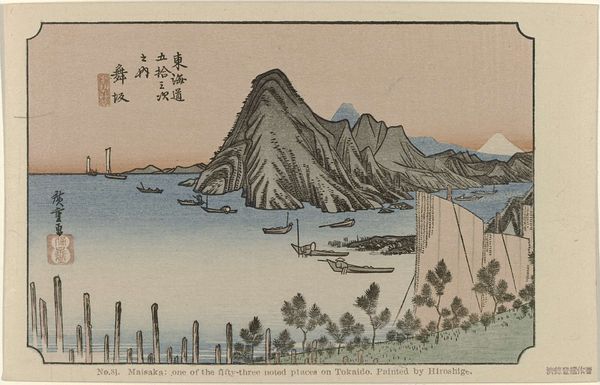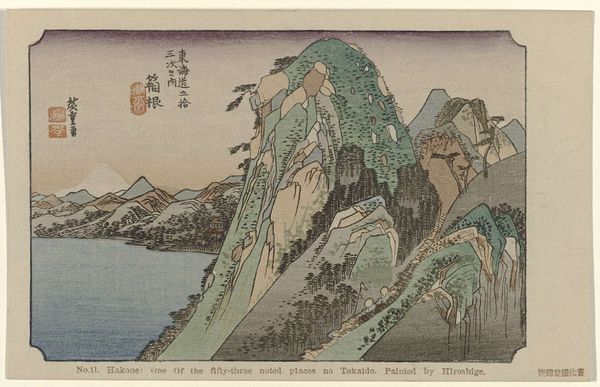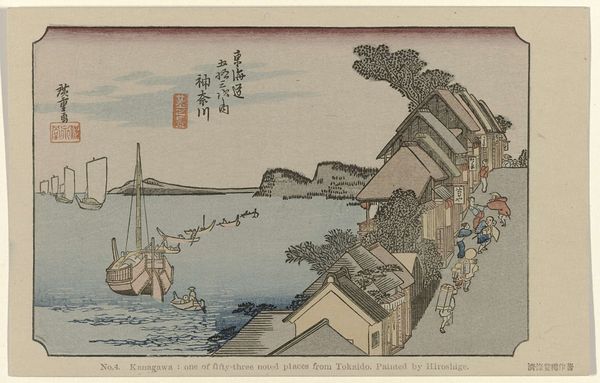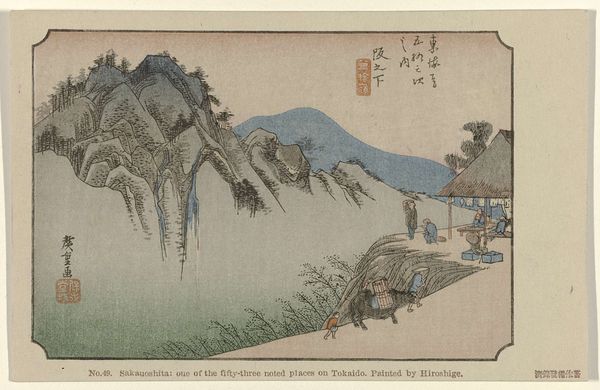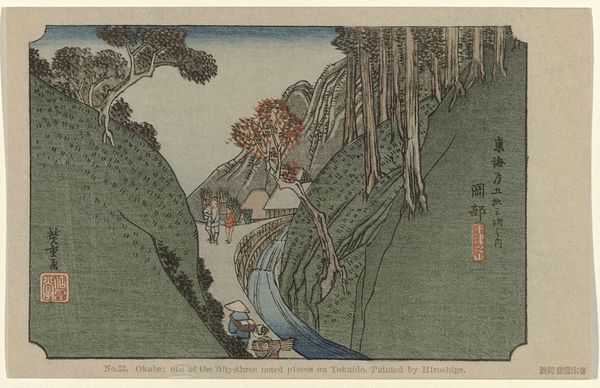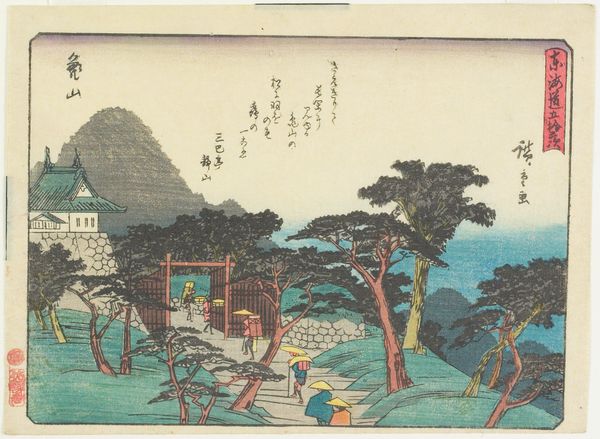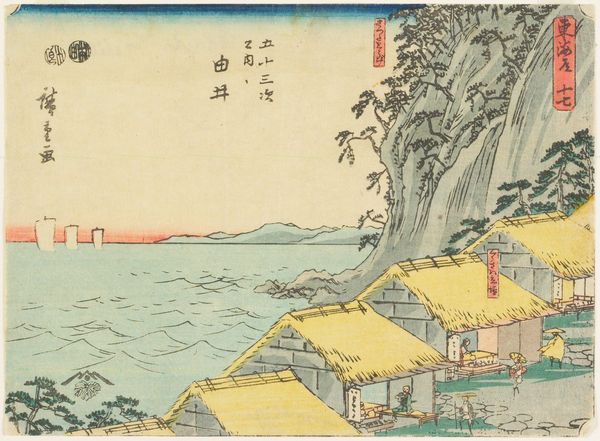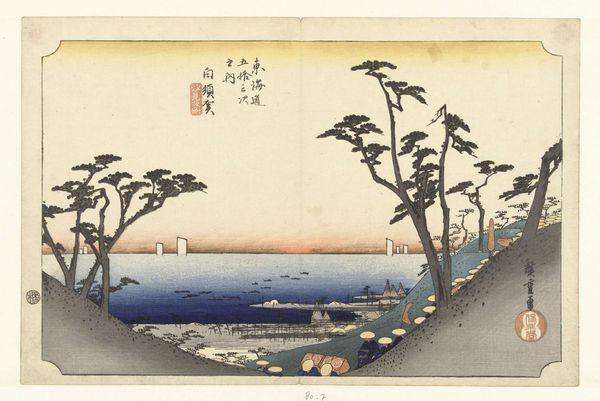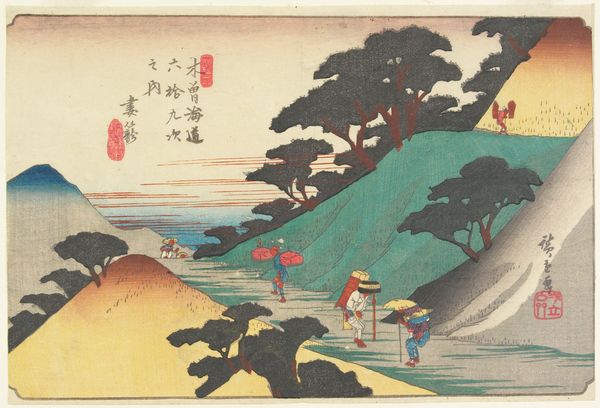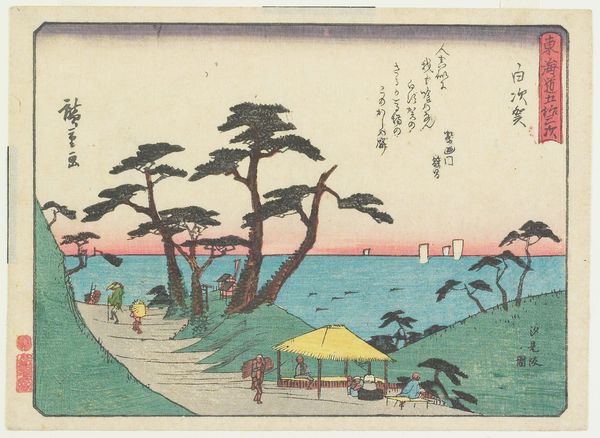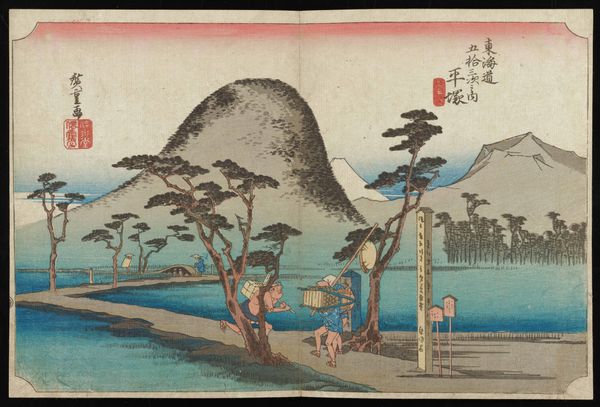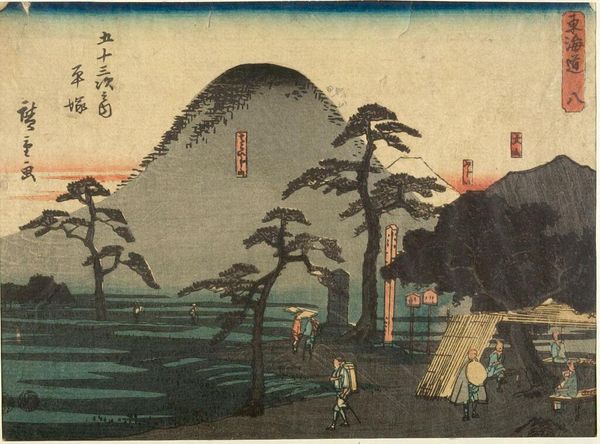
Dimensions: height 90 mm, width 141 mm
Copyright: Rijks Museum: Open Domain
Curator: We’re looking at “Yui” by Utagawa Hiroshige, a woodblock print made around 1906 and now housed in the Rijksmuseum. It's a striking image, dominated by a very interesting precipice and gnarled pine tree. Editor: Immediately, the compositional choices evoke a sense of both serenity and the precariousness of life. That diagonal slash of the cliff, the figures barely holding on. What were the power dynamics at play within the cultural context in which this image was produced and circulated? Curator: I'm drawn to the layered process involved in the production of such prints, it reminds us that each impression, though seemingly identical, bears the subtle mark of handcraft. The skill needed to carve these blocks and apply the pigments to achieve this effect. How would this have been commissioned? The economics behind it all interests me so much. Editor: Absolutely. These images also circulated within very specific socio-economic strata, shaping not only perceptions of place but also ideas of national identity. How might this romanticized vision have affected notions of tourism, pilgrimage, and mobility for different demographics in Meiji-era Japan? I find that point so very relevant today as global landscapes undergo major climactic changes. Curator: You know, that point of consumerism and its potential to be either radical, and revolutionary in a commercial industry is definitely worth consideration here. Because while these scenes depict serene landscapes they also reveal a highly structured system of material production that enabled mass appeal. Editor: Agreed. These serene landscape prints circulated far and wide, shaping global tastes. Hiroshige also invites us to reflect on our relationship with place, but simultaneously, they must invite discussion about accessibility and identity in this context. Curator: Absolutely! By foregrounding the conditions that enabled its production, this print asks us to examine our engagement with the landscapes—to really unpack what's in front of us. The labour that produces such aesthetic harmony. Editor: Considering all that, these enduring works invite reflection on our own time of crisis—prompting critical conversations. The visual landscape, whether material, printed, or digital, forms a site of great cultural impact and power.
Comments
No comments
Be the first to comment and join the conversation on the ultimate creative platform.
